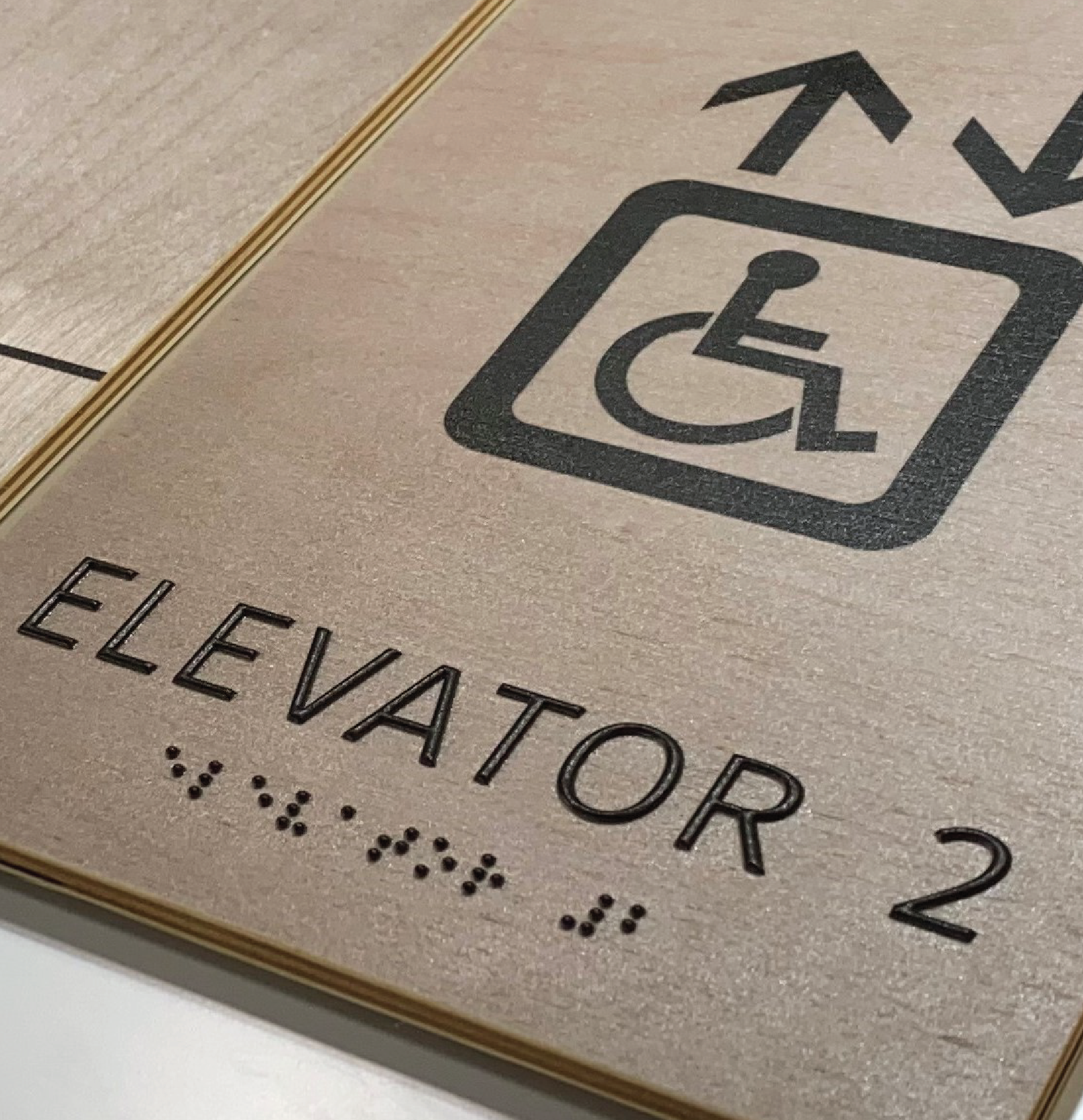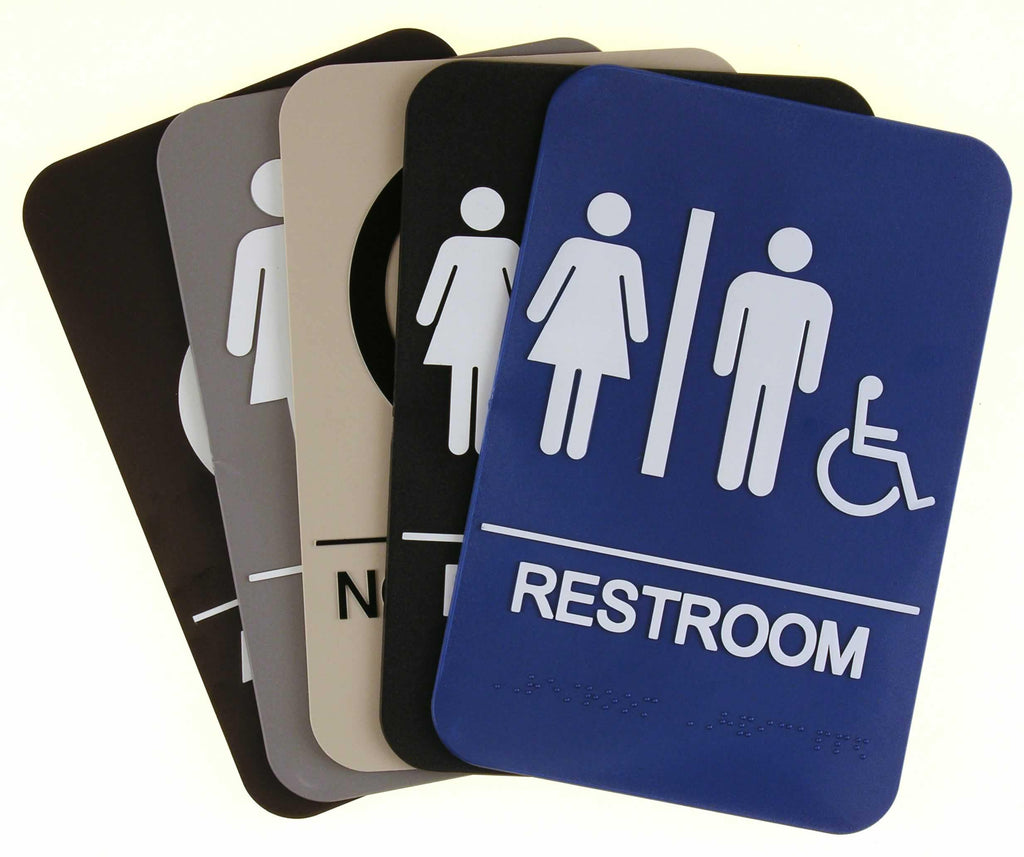The Effect of ADA Signs on Neighborhood Access
The Effect of ADA Signs on Neighborhood Access
Blog Article
Exactly How ADA Indicators Change Areas for Individuals With Handicaps
The makeover of rooms via ADA indicators for individuals with specials needs is a profound testament to the power of accessibility. By adhering to ADA conformity, settings end up being risk-free and navigable, with indicators that function necessary elements like high-contrast colors and Braille, therefore boosting visibility and comprehension. Past plain capability, these indications add to area incorporation, supplying a feeling of empowerment and belonging. As we look in the direction of future patterns in easily accessible signage, one need to consider just how developing innovations might better change these rooms. What challenges and opportunities lie in advance in guaranteeing these areas stay comprehensive for all?

Relevance of ADA Conformity
Guaranteeing ADA compliance is not just a lawful responsibility but likewise a societal commitment to inclusivity and ease of access. By adhering to the standards established forth in the Americans with Disabilities Act (ADA), organizations demonstrate their dedication to developing environments where people with specials needs can navigate and engage without obstacles. ADA conformity is important in removing discrimination, fostering equal rights, and advertising freedom for individuals with impairments.
Companies and public organizations profit substantially from ADA compliance. It assists them avoid lawful charges and enhances their online reputation by showcasing their dedication to variety and incorporation. Moreover, by guaranteeing facilities are easily accessible to everybody, companies can draw in a wider client base, including the 61 million Americans living with impairments. This inclusivity extends beyond simple conformity, showing an aggressive position towards ease of access.
Furthermore, ADA compliance is a foundation of global design, which emphasizes creating rooms that accommodate all people, regardless of their capacities. By executing compliant signage and features, companies add to a more equitable culture, where all members can take part totally. Ultimately, ADA conformity goes beyond legal obligation, symbolizing a social value that focuses on empowerment and equal possibility for everybody.
Enhancing Navigation and Security
Browsing areas with self-confidence and safety is critical for individuals with disabilities, and ADA-compliant signs plays a critical role in accomplishing this goal. These signs are created with particular features to deal with the varied requirements of individuals with different specials needs, thus facilitating smoother and safer navigation throughout personal and public areas. By giving clear, standard details, ADA indications reduce confusion and promote a greater feeling of independence for individuals who count on them.
The calculated positioning of ADA signs ensures that important info is obtainable to everybody, consisting of those with visual, acoustic, or cognitive impairments. Responsive and Braille aspects on indicators help aesthetically impaired people separately find exits, bathrooms, and other essential areas. In emergency scenarios, ADA indications add to reliable discharges by clearly marking emergency departures and paths, therefore boosting security for all owners.
In addition, ADA-compliant indications cultivate a comprehensive environment by dealing with the unique navigation difficulties faced by individuals with handicaps. This not only help in their personal safety however additionally urges participation in social activities by advertising equal access to civil services and centers. Eventually, efficient ADA signage transforms spaces into obtainable, safe, and welcoming settings for every person.
Attributes of Effective ADA Indications
To create effective ADA indications, it is imperative to incorporate specific features that deal with the diverse availability demands of people with disabilities. One essential function is making use of high-contrast shades, which substantially enhance exposure for individuals with visual impairments. The background and message must contrast greatly to ensure the information is conveniently discernible. Additionally, the message must remain in a sans-serif font style, as these font styles provide clearer readability at a range.
Another crucial attribute is responsive elements, such as increased characters and Braille, promoting gain access to for visually impaired people. The raised characters should be at least 1/32 inch over the surface, enabling very easy touch reading. Braille must be positioned straight listed below equivalent text, making certain uniformity and ease of navigating.
The placement of ADA indications is also vital for their efficiency. They have to be installed at an elevation between 48 to 60 inches from the ground to ensure they are within reach for individuals in wheelchairs or those with mobility help. Indications must be situated near doorways, elevators, and restrooms, guaranteeing that crucial information is available exactly when needed. By integrating these functions, ADA indicators can substantially boost wayfinding and accessibility for all.
Influence on Community Addition
ADA indications significantly add to community addition by guaranteeing that public areas are easily accessible and accessible for individuals with handicaps. These signs, developed in compliance with the Americans with Disabilities Act (ADA), feature responsive aspects, braille, and Click This Link high-contrast shades, helping not only those with aesthetic disabilities but a diverse array of impairments - ADA Signs. Because of this, they play a critical role in creating atmospheres where people with specials needs can participate fully and independently in area life

Moreover, ADA signs assist businesses and institutions satisfy lawful obligations, thereby avoiding potential discrimination legal actions and boosting their reputations as comprehensive entities. Eventually, ADA indications are important tools in the continuous initiative to build even more equitable and available communities for everyone.
Future Trends in Accessible Signs
The assimilation of cutting-edge modern technologies promises to transform just how people with impairments engage with their atmospheres. Digital indicators geared up with sensors and connectivity can connect with personal tools to give personalized info, such as text-to-speech for visually impaired users or simplified graphics for those with cognitive impairments.
Enhanced reality (AR) additionally holds substantial potential. AR applications can overlay digital details onto real-world settings, providing users with enhanced navigational aids and contextual info (ADA Signs). This can be particularly useful in complicated setups like airports or big public places where typical signs may fall short
One more arising trend is the unification of Internet of Things (IoT) modern technology to create a network of interconnected indicators. This enables real-time updates and enhanced ease of access, adapting to changes in the setting or customer demands. In addition, with the growing emphasis on inclusivity, future policies may promote even much more sophisticated signs options, making certain universal access and cultivating a much more comprehensive society for all individuals.
Final Thought
ADA indications play a crucial role in changing areas for people with impairments More Help by making certain ease of access and advertising self-reliance. Compliance with ADA standards improves navigating and security with the use of high-contrast shades, responsive components, and Braille.
The change of rooms via ADA signs for people with impairments is an extensive testament to the power of availability.To create effective ADA signs, it is critical to include certain features that attend to the diverse accessibility requirements of people with disabilities.ADA indicators dramatically add to area incorporation by making certain that public rooms are accessible and accessible for people with impairments.By helping with the convenience of motion and understanding within public spaces, ADA indications cultivate a feeling of belonging and empowerment among people with specials needs.ADA signs play an my blog important function in changing spaces for people with handicaps by making certain ease of access and advertising self-reliance.
Report this page